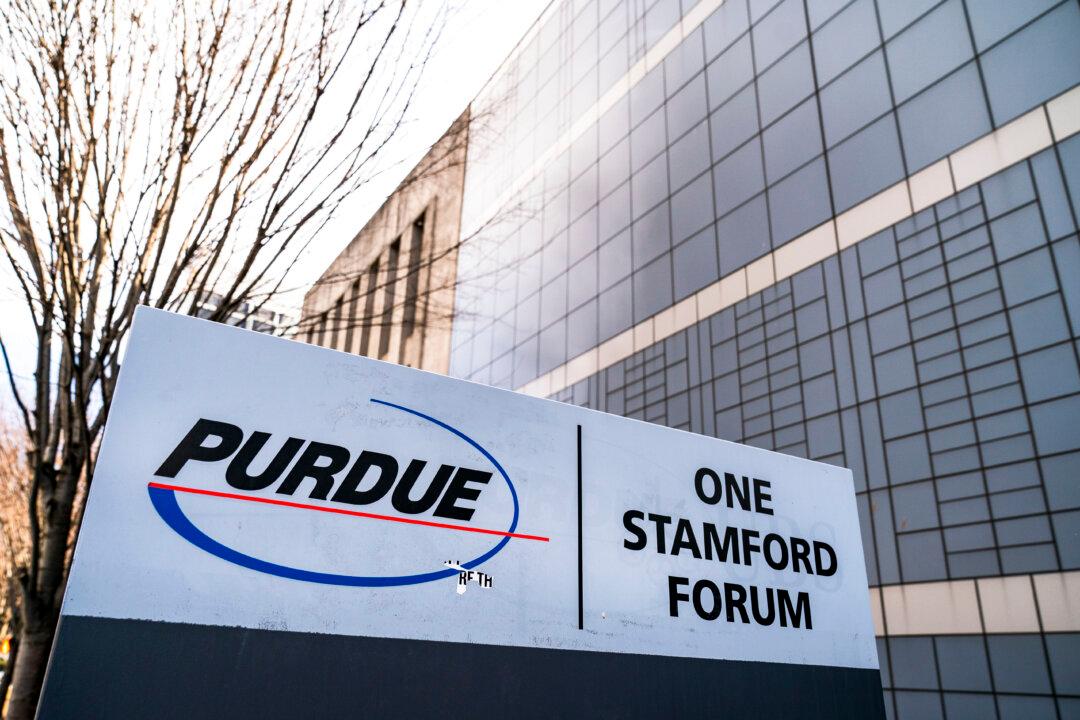On Grace Schara’s last day, she had been given a combination of a sedative, an anxiety medication, and morphine leading up to her time of death at 7:27 p.m. on Oct. 13, 2021.
Grace felt cold after the 6:15 p.m. morphine injection, Jessica reported. She attempted to get a nurse’s help and was told this was normal.
Jessica Facetimed her parents, Scott and Cindy, at 7:20 p.m. They both joined Jessica in her pleas.
There was nothing to be done, a nurse responded from the hallway, because Grace had been coded as Do Not Resuscitate (DNR).
Scott and Cindy yelled that she wasn’t DNR.
“Save our daughter,” they cried.
Amid a back and forth of shouting, Scott and Cindy watched their 19-year-old daughter die on Facetime at 7:27 p.m.
“I wake up a couple of nights a week and think, ‘Why didn’t I do this? Why didn’t I do that?’” Scott told The Epoch Times. “Why didn’t I get her out of there? All of these things I still play in my mind.”
‘Why Did They Ignore These Warnings?’
He referenced the package insert for the morphine injection, which states that the opiate shouldn’t be used in combination with benzodiazepines (Lorazepam) or other depressants (Precedex), both of which Scott said Grace had been given without the family’s knowledge.“It says right in the insert, ‘may result in profound sedation, respiratory depression, coma, and death,’” Scott said. “Then it says to have a Naloxone injection available to resuscitate, but with all the nurses in the hallway, no one did this. Why did they ignore these warnings?”
From the beginning, Scott said Grace’s status as an unvaccinated patient was the subject of scorn, and Scott reported medical staff to be critical of the family for following the medical advice of America’s Frontline Doctors, an organization of physicians that supports the use of early-treatment protocols such as ivermectin, hydroxychloroquine, vitamins C and D, and zinc.
Though family members haven’t been allowed to be in the hospitals with their loved ones since COVID-19 began, both Scott and Jessica were permitted as patient advocates through the American Disabilities Act because of Grace’s Down syndrome, though Scott said hospital staff initially resisted this.
While staying at the hospital, Scott was virtually guaranteed that he would test positive for COVID-19, which he did on Oct. 7.
He was eventually kicked out of the hospital for turning off the alarms that went off in Grace’s room at night so she could sleep after Scott said he had asked staff several times to make them sound off only at the nurses’ station. He was also told the prior three shifts of nurses didn’t want him in the room.
When the guard escorted him out, Scott said the guard told him that he needs to report “to the higher-ups” what was happening to his daughter.
This wouldn’t be the last time a hospital staff member would indicate to the family that what the hospital was doing “wasn’t right.”
There were several circumstances Scott cites in his report in which he said hospital staff were arbitrarily recording Grace’s oxygen levels lower than what they were to justify the use of a ventilator.
In one of these situations, Scott said a doctor was using faulty data recorded at 11:30 p.m., the night prior after an incident that put Grace’s blood pressure at 235 over 135 with a heart rate at 150 beats per minute.
“When I insisted they retake the blood numbers, Grace was fine, and at no time did she need a ventilator,” Scott said.
When Scott and Cindy were asked four additional times about Grace potentially needing a ventilator, the request was couched in the explanation that “these things tend to happen in the middle of the night when we can’t get a hold of the family.
“So, they wanted to have us make a preemptive decision so then they could decide whenever they wanted to put Grace on the ventilator,” Scott said. “That’s significant because this is what they do: they want this decision by the family to be in their back pocket.”
Scott said it’s also significant because, since COVID-19, families haven’t been in the hospitals to witness any inconsistencies.
Because of his time as an advocate, he said, he was able to investigate and find that the arbitrarily low oxygen readings were based on consistently faulty equipment and staff not fixing the equipment timely.
“If I hadn’t been there, as many families aren’t able to be, they would have just put her on the ventilator, which itself is a death sentence,” Scott said.
On the morning of Grace’s last day, Jessica wanted to take a shower, but the nurse told her she had to shower at home, Scott said.
This is unusual, Scott said, because when Scott was an advocate, he was told he could not leave the hospital—then return—to prevent the risk of leaving with and bringing in COVID-19.
“So, why did they have a different set of rules for her that day than they did for me?” Scott asked.
While Jessica was gone for that hour, Scott said hospital staff strapped Grace into the bed because staff later told Jessica that Grace had wanted to use the bathroom.
Because no underlying reason was given for their restraining Grace, other than for her safety, Scott said he can only speculate that it was because of Grace’s Down’s syndrome, though as Scott pointed out, Grace was high functioning.
“Would they have done that to you or me if we were a patient?” Scott asked.
When Jessica returned, she found Grace’s health had declined. Scott said he later discovered that the staff increased the level of sedation.

‘They Didn’t Believe Grace Should’ve Died’
Cindy reported that a nurse helping the family take Grace’s belongings out to their truck told Cindy that she and some other nurses “didn’t believe Grace should’ve died.”According to Wisconsin state statute, Grace’s health care agent—which was her mother Cindy—must consent to and sign the DNR order, which Scott said never took place.
State statute also requires a DNR bracelet to be placed on the patient, which Scott said was never on Grace.
In addition, state statute gives DNR-revocation authority to the health care agent.
“When we yelled, ‘she’s not a DNR, please help our little girl,’ and the nursing staff stood there saying, ‘She’s DNR,’ that was the final violation that resulted in her death,” Scott said. “We were giving them direction to resuscitate the patient, and they didn’t.”
Grace’s cause of death, according to the death certificate, is acute respiratory failure with hypoxemia as a consequence of COVID pneumonia; however, Scott argues that the respiratory failure was caused by the combination of drugs.
Through legal means, Scott said he’s trying to get the cause of death changed to gross negligence.
A Different Experience
Scott later checked into St. Vincent Hospital in Green Bay, Wisconsin, where he said he had “a completely different experience,” despite being in worse condition than Grace.He said they put him on vitamins and supplements instead of sedatives and anxiety medications, with a daily nebulizer treatment.
“They never pushed for a ventilator or remdesivir,” he said. “I truly believe that if Grace had come to this hospital she would still be alive today.”
The Hierarchy
Todd Callender, an international lawyer with Disabled Rights Advocates and legal counsel to the Truth for Health Foundation (spearheaded by Dr. Lee Vliet), told The Epoch Times he’s taken calls asking for help for cases like Scott’s every day since July 2021.Both organizations investigate and give legal and medical support in areas of civil rights surrounding COVID-19 treatment and restrictive policies while researching future developments.
The protocols with which Callender has become familiar with and recognize in Scott’s case are passed down hierarchically from the World Health Organization (WHO) to Centers for Disease Control (CDC) and National Institute of Health (NIH) arising from the Public Readiness and Emergency Preparedness Act (PREP Act) and Health and Human Services authorization to release funding for the declared pandemic that sets the protocols in motion, Callender said.
“The WHO then directs the various state health bodies—in this case, the CDC and NIH—on treatment,” Callender said. “This is why every country is responding in the same way at the same time globally; it’s a back door to a one-world dictatorial government.”
In the Hospital
“Say a patient goes into the hospital for a broken arm,” Callender said. “That patient is given a COVID test, which the test will almost always come back positive, and if it doesn’t, they’ll test again until it does.”Then, the patient is admitted and put on an IV bag with a tranquilizer that lowers their oxygen absorption, which then justifies putting the patient into COVID isolation where the antiviral drug remdesivir— which Callender called “lethal”— is added to the bag before being moved into the intensive care unit where the patient is then given morphine and fentanyl while being deprived of nutrition, Callender said.
Each of these procedures brings in high federal reimbursements of up to hundreds of thousands of dollars; however, pinning down a specific number reflecting an exact amount is difficult due to overlapping charges and variations from state to state.
And these protocols are enforced, Callender said.
A lawyer for a hospital in Ohio where Callender was attempting to remove a patient told Callender that his client “would die in his hospital and there was nothing I could do about it,” Callender said.
“He died there weighing only 85 pounds,” Callender said.
‘Earthly Dad’
Scott and his family continue to grieve, having good and bad days, he said.He remembers Grace calling him her “earthly dad,” Scott said, because she knew who her “heavenly dad” was.
“She was the best kid you could ever have,” Scott said. “She had a love for the Lord that was hard to grasp.”
Today, he’s using the family’s loss to inform others, he said.
“I’m motivated to get this story out, not just because of my daughter anymore,” Scott said. “What’s motivating us is people don’t know this is happening, and it’s real.”






